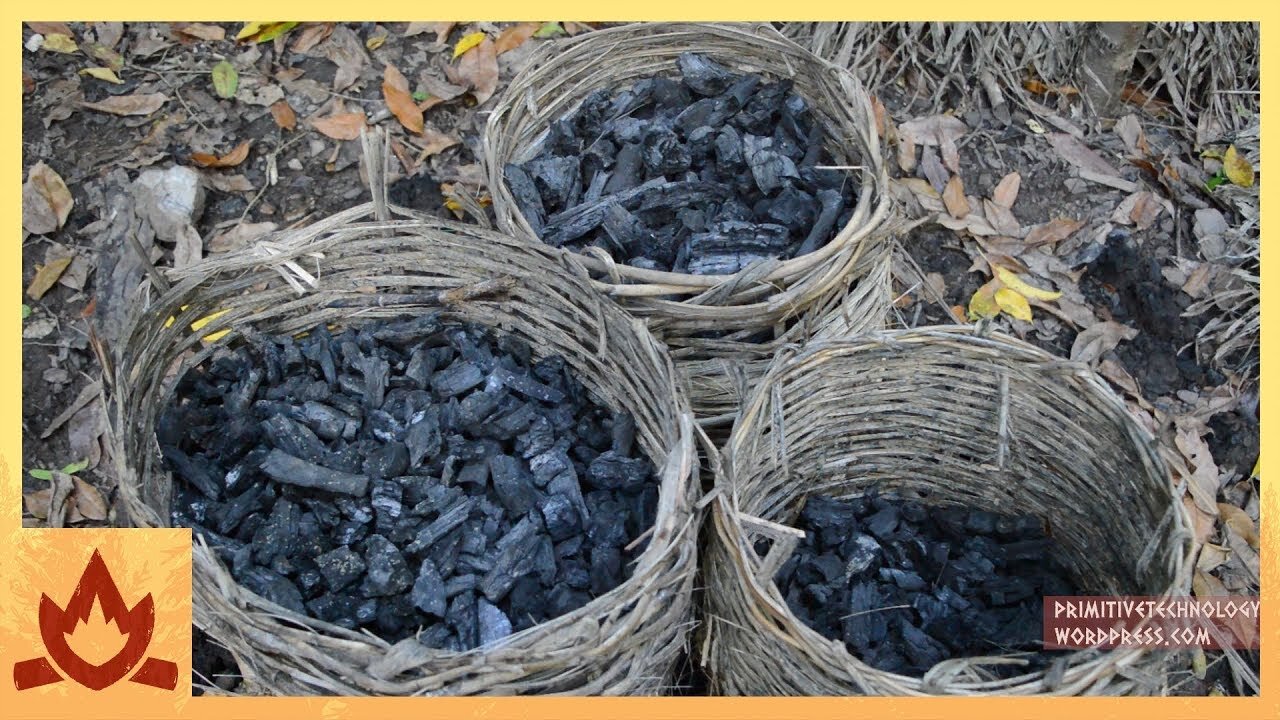Premium Only Content

Primitive Technology: How to Create Charcoal
I made a batch of charcoal using the mound method then stored it in baskets for later use. Charcoal is a fuel that burns hotter than the wood it's made from. This is because the initial energy consuming steps of combustion have taken place while making the charcoal driving off the volatile components of the wood (such as water and sap). The result is a nearly pure carbon fuel that burns hotter than wood without smoke and with less flame. Charcoal was primarily a metallurgical fuel in ancient times but was sometimes used for cooking too.
To make the charcoal the wood was broken up and stacked in to a mound with the largest pieces in the center and smaller sticks and leaves on the out side. The mound was coated in mud and a hole was left in the top while 8 smaller air holes were made around the base of the mound. A fire was kindled in the top of the mound using hot coals from the fire and the burning process began (the hot coals are being poured in the top using a small pot at 2:38).
The fire burned down the inside of the mound against the updraft. I reason that this is a better way to make charcoal as the rising flames have used up the oxygen and prevent the charcoal already made above them from burning while driving out even more volatiles .
I watched the air holes at the base of the mound and when the fire had burned right up to each opening I plugged them with mud. Once all 8 holes had be sealed the hole in the top of the mound was sealed with mud and the mound left to cool. From lighting the mound to closing up the holes the whole process took about 4 hours.
The next day when the mound was cool to the touch (this can take about 2 days sometimes) I opened the mound. The resulting charcoal was good quality. Some wood near the air entries had burned to ash though these were only small twigs and leaves. This is the reason small brush is put on the out side of the mound, to be burned preferentially to the larger wood on the inside thus protecting the large pieces of charcoal.
The charcoal that was made was hard and shiny. When broken open it had the ray structure of the wood preserved. When moving the hand through it the charcoal sounded tinny, like coral on a beach being moved by waves. These are signs of good quality. Bad charcoal is soft, breaks easily and has a muffled sound.
I intend to use the charcoal to produce hotter fires than I'm able to with wood alone. From my research, a natural draft furnace using wood (a kiln) can reach a maximum of 1400 c degrees whereas a natural draft furnace using charcoal can reach 1600 c degrees. Achieving high temperatures is necessary for changing material to obtain better technology (e.g. smelting ore into metal).
-
 20:17
20:17
Stephen Gardner
2 hours agoAlex Jones WARNS Trump of Soros funded Coup!
4.51K28 -
 1:39:07
1:39:07
vivafrei
4 hours agoWhy Was He Here? Biden Cover-Up of Assault by Afghan Refugees? When Satire Meets Reality & MORE!
14.6K21 -
 1:05:35
1:05:35
Russell Brand
5 hours agoMAHA Summit: Comedy, Controversy & Clarity - SF656
65.2K23 -
 49:45
49:45
Liberty Hangout
1 day agoThe Left HATES America and Can't Change My Mind!
80.8K92 -
 23:42
23:42
The Kevin Trudeau Show Limitless
2 days agoThe Brotherhood’s Ancient Mirror Code Revealed
33.4K14 -
 10:18
10:18
Colion Noir
6 hours agoViral TikTok Proves Gun Owners Wrong?
48.9K39 -
![MAHA News [11.28] Team MAHA Dropping Bombs, Pesticide Fight, Campbell's Soup Outed, Save Ranchers](https://1a-1791.com/video/fwe2/11/s8/1/O/6/L/D/O6LDz.0kob-small-MAHA-News-11.28.jpg) 1:19:18
1:19:18
Badlands Media
17 hours agoMAHA News [11.28] Team MAHA Dropping Bombs, Pesticide Fight, Campbell's Soup Outed, Save Ranchers
28.4K1 -
 1:01:18
1:01:18
DeVory Darkins
6 hours agoBREAKING: Trump issues fatal update to National Guard shooting
136K92 -
 49:57
49:57
The Quartering
5 hours agoTrump UNLOADS, Walmart Black Friday Madness & Trans Taco Bell Attack
38.5K39 -
 39:51
39:51
Tucker Carlson
5 hours agoGeorge Galloway Speaks Out on Being Forced Into Exile After Criticizing Ukraine War
63.1K153